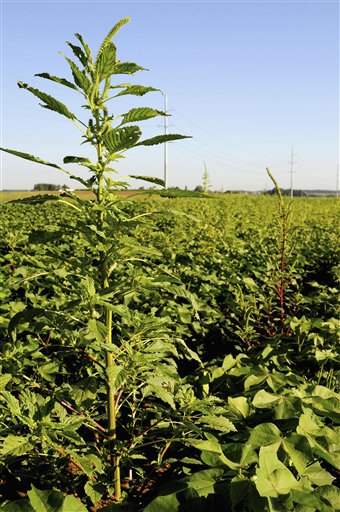"When you try to kill something, what does it do? It tries to not be killed." That truism from Patrick Tranel, an expert in molecular weed science at the University of Illinois, sums up a big problem in modern agriculture as detailed in a story at . The issue is that weeds—in this case, defined as unwanted plants that overwhelm crops and decimate yields—keep evolving to become resistant to herbicides.
A case in point is one called Palmer amaranth ( ), a cousin of water hemp, that can reach 8 feet in height lickety-split and overwhelm fields with its root system. And, so far, the plant has developed resistance to nine different classes of herbicides, writes Douglas Main. It's a prime example of why the piece is headlined, "The weeds are winning.
" "We really need a fundamental change in weed control, and we need it quick, 'cause the weeds have caught up to us," says Larry Steckel of the University of Tennessee. "It's come to a pretty critical point." The story provides a historical perspective on the advent of herbicides (particularly Roundup and its use of glyphosate) and how farms became dependent on them while expanding in size.
Now, these industrial-scale farms are vulnerable because they rely on spraying to sustain yields, and herbicides aren't keeping up with evolving plants. The story explores potential solutions, including using AI-controlled lasers or electricity to zap weeds, and "weed seed destructors." The latter involves gathering the pollen of unwanted plants,.


















